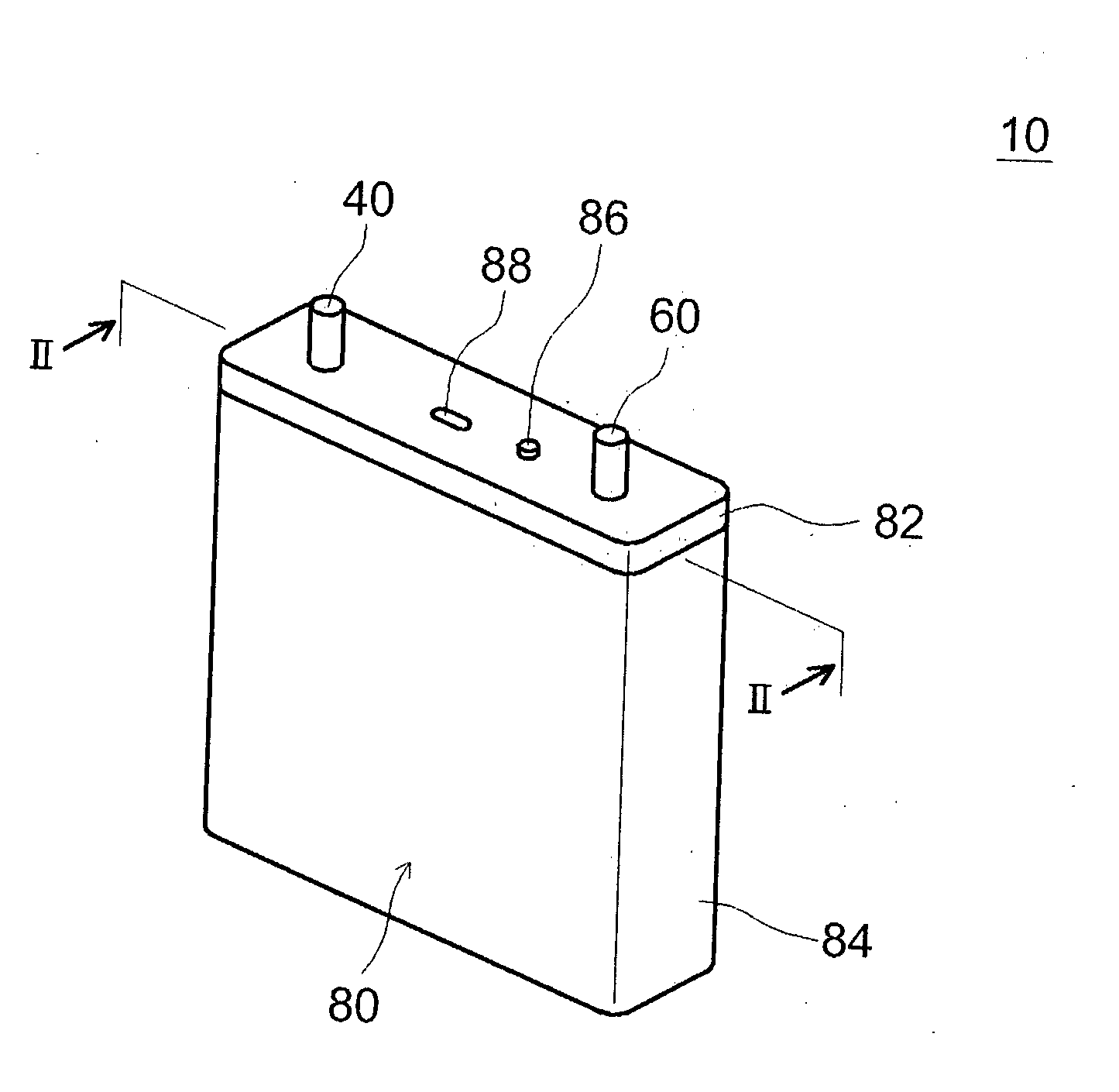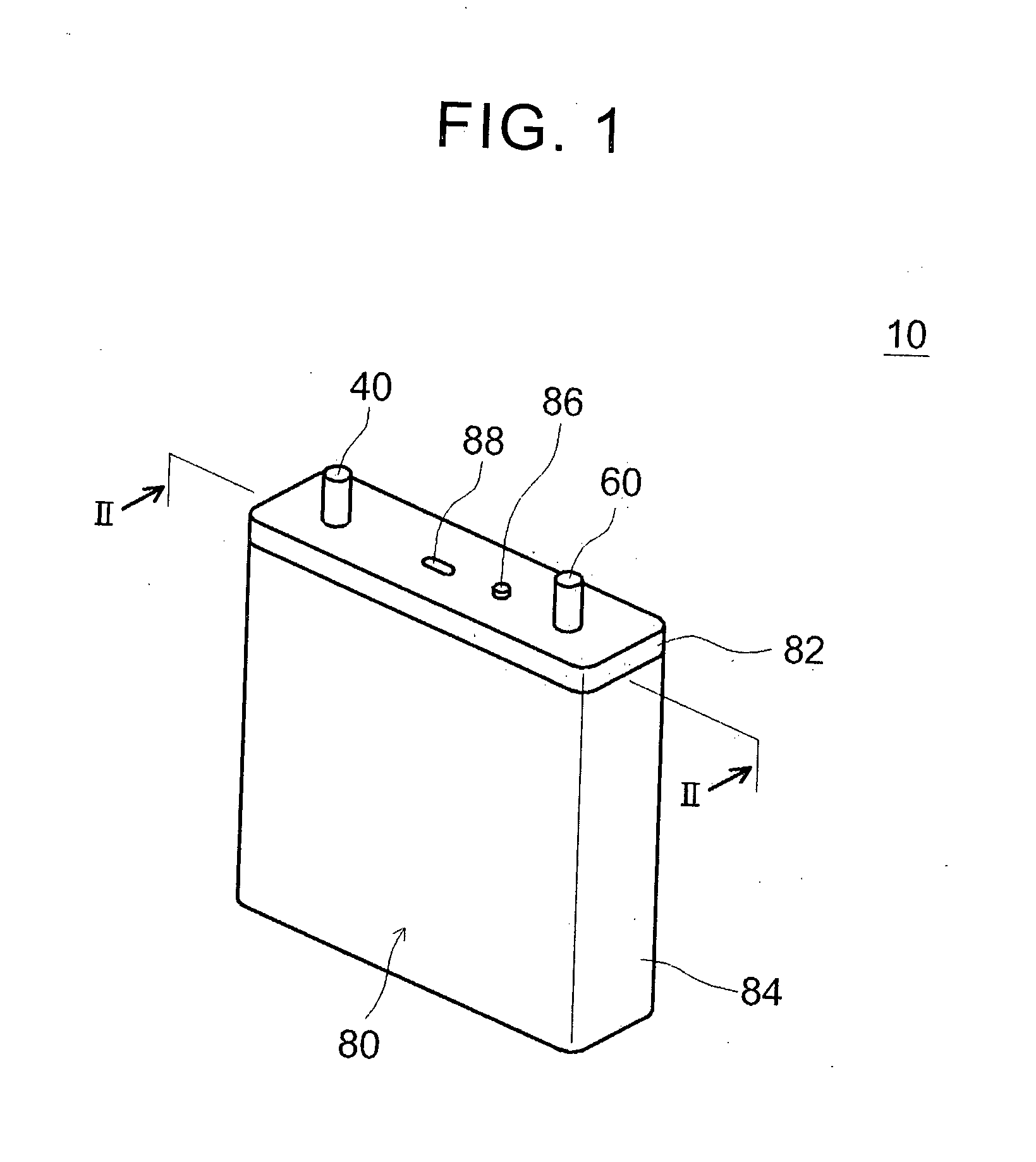Method of manufacturing non-aqueous electrolyte secondary battery and non-aqueous electrolyte secondary battery
a technology of non-aqueous electrolyte and secondary batteries, which is applied in the direction of batteries, sustainable manufacturing/processing, wound/folded electrode electrodes, etc., can solve the problems of minor short-circuit other than, and the possibility of foreign matter in the wound electrode body, etc., and achieves short time, low cost, and high reliability
- Summary
- Abstract
- Description
- Claims
- Application Information
AI Technical Summary
Benefits of technology
Problems solved by technology
Method used
Image
Examples
Embodiment Construction
[0033]According to the studies conducted by the inventors as described above, the following knowledge has been obtained as to a situation of the occurrence of minor short-circuiting that frequently occurs in the case where a secondary battery that is equipped with a wound electrode body is subjected to an aging treatment at a high temperature that is equal to or higher than 60° C.
[0034][Region of Minor Short-Circuiting]
[0035]As described above, minor short-circuiting resulting from this high-temperature aging occurs at an end on the side where an uncoated portion of a positive electrode current collector is provided, between positive electrode active material layers and negative electrode active material layers on an outermost periphery of a wound electrode body. Then, especially in the case where the wound electrode body is flatly squashed, minor short-circuiting frequently occurs at a curved portion (a wound R portion) with a largest radius of curvature on a winding cross-section ...
PUM
| Property | Measurement | Unit |
|---|---|---|
| Temperature | aaaaa | aaaaa |
| Electric potential / voltage | aaaaa | aaaaa |
Abstract
Description
Claims
Application Information
 Login to View More
Login to View More - R&D
- Intellectual Property
- Life Sciences
- Materials
- Tech Scout
- Unparalleled Data Quality
- Higher Quality Content
- 60% Fewer Hallucinations
Browse by: Latest US Patents, China's latest patents, Technical Efficacy Thesaurus, Application Domain, Technology Topic, Popular Technical Reports.
© 2025 PatSnap. All rights reserved.Legal|Privacy policy|Modern Slavery Act Transparency Statement|Sitemap|About US| Contact US: help@patsnap.com



